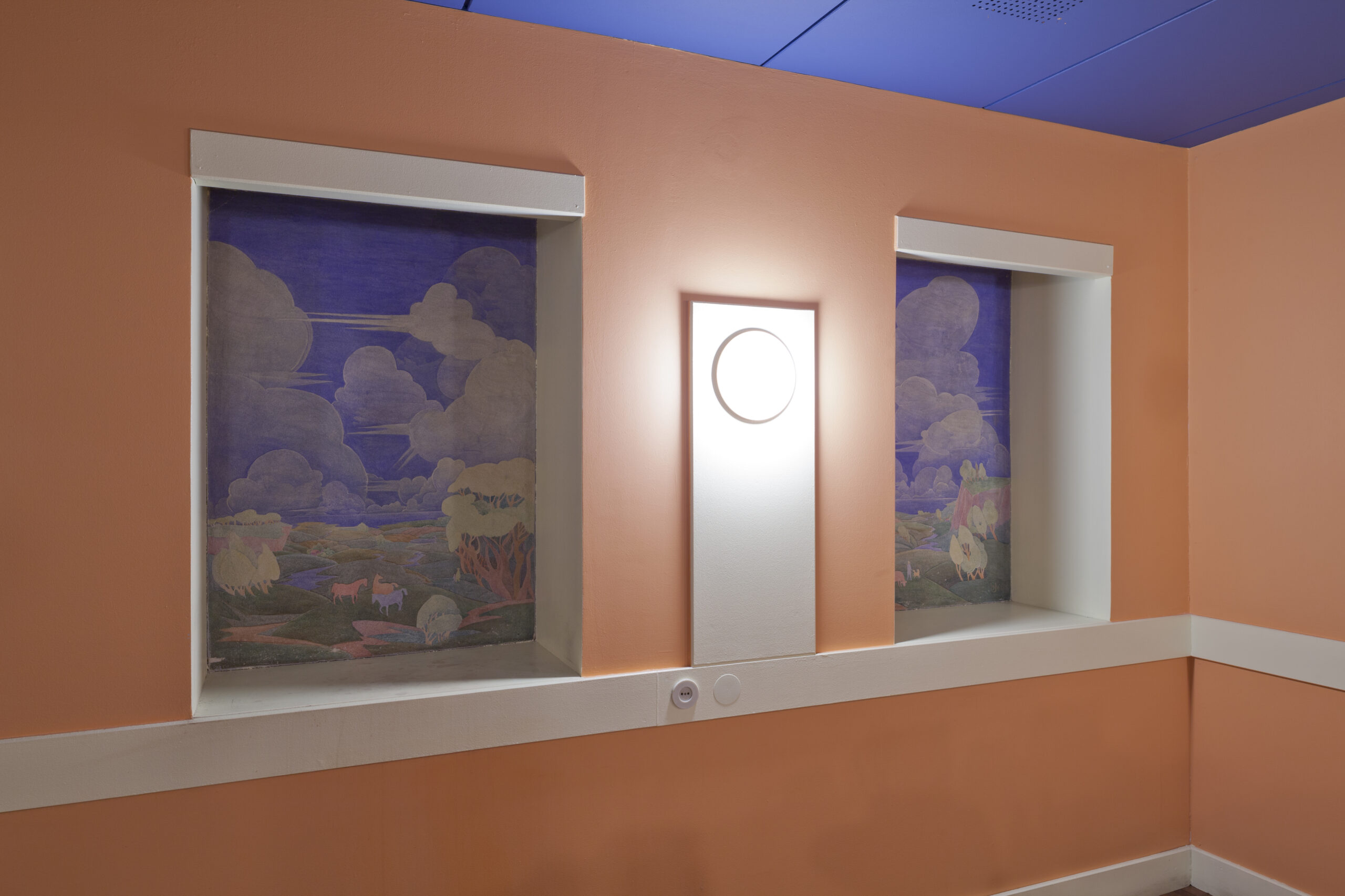Fresco Paintings in the Paide Automotive Transport and Service Hub no. 10
Year of completion: 1989
Address: Järva County, Paide, Pikk 42
Author Urve Dzidzaria
Fresco
20 m²; 2 m²
Not listed as a cultural monument
Automotive transport and service hubs were establishments that dealt with road construction, passenger and cargo transport, emergency transport, road maintenance and vehicle repair on a district basis, but also with the upkeep of petrol stations, taxi service, and postal service. Although most economic entities and collective farms already had their own automotive hub by the 1970s, the more zealous hubs managed to expand their circle of contractual clients. Automotive hubs were directly subordinate to the Estonian SSR Ministry of Automotive Transport and Motorways, and their income was directed to support weaker hubs, which meant that workspace-wise they were not as innovative as the collective farms that vigorously invested their own revenue into the development of rural architecture. Despite that, the Paide Automotive Hub was a hard-working establishment, which affected the formation of the whole region’s urban construction in the course of 70 years, establishing a housing stock for the workers, and constructing thoroughfares, access roads and so on.
The situation changed with perestroika, during which the automotive transport and service hubs began creating cooperatives-small businesses. New finance sources and economic independence made it possible to commission art into the clubhouse. In 1988 the automotive hub’s café was decorated with the 2 m2 large fresco Vaade aknast (“View from the Window”) by Urve Dzidzaria, and the year after that, a piece ten times bigger was commissioned from the same artist into the clubhouse’s lobby – Allika juurde jõuda (“To Reach the Source”). Similarly to other frescoes by Dzidzaria, the piece speaks of searching for peace and oneself, and as the title implies, reaching the source of life. A dystopian cubic town is depicted in the piece’s upper right corner, which has been abandoned by the motorists who must sit in traffic on this trip, like on any other. However, they are given hope by a rainbow, which has been a symbol of amity between man and God throughout the history of art. The rest of the artwork in its entirety depicts a paradisiacal landscape where people seem to have found the road to what is most important. The spiritual atmosphere of the artwork is emphasised by the references to Christianity (church arches, the cross, a white dove, the Virgin Mary with her child). It is known that during the perestroika conditions, the Lutheran church had a strong resurgence in Estonia, and religious symbolism increasingly entered the public space not only through the reopening of places of worship, but through other contexts as well.
There are numerous murals in Estonia that are in danger of being destroyed, as new uses for the Soviet Era facilities have not been found. The cheery clubhouse constructed for vehicle mechanics and motorists is one of these facilities, having been abandoned after the adoption of a new national order. The stairwell in front of the fresco was used as the storage space of a second-hand shop for years, and the stacked bags of clothes have greatly damaged the artwork. But none of that matters – a new zoning plan has been adopted for the entire territory of the automotive hub, which implies that the Soviet Era elements will soon be demolished, and the exceptional fresco will be destroyed with them.
Gregor Taul








